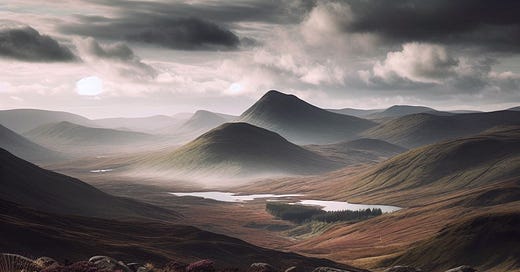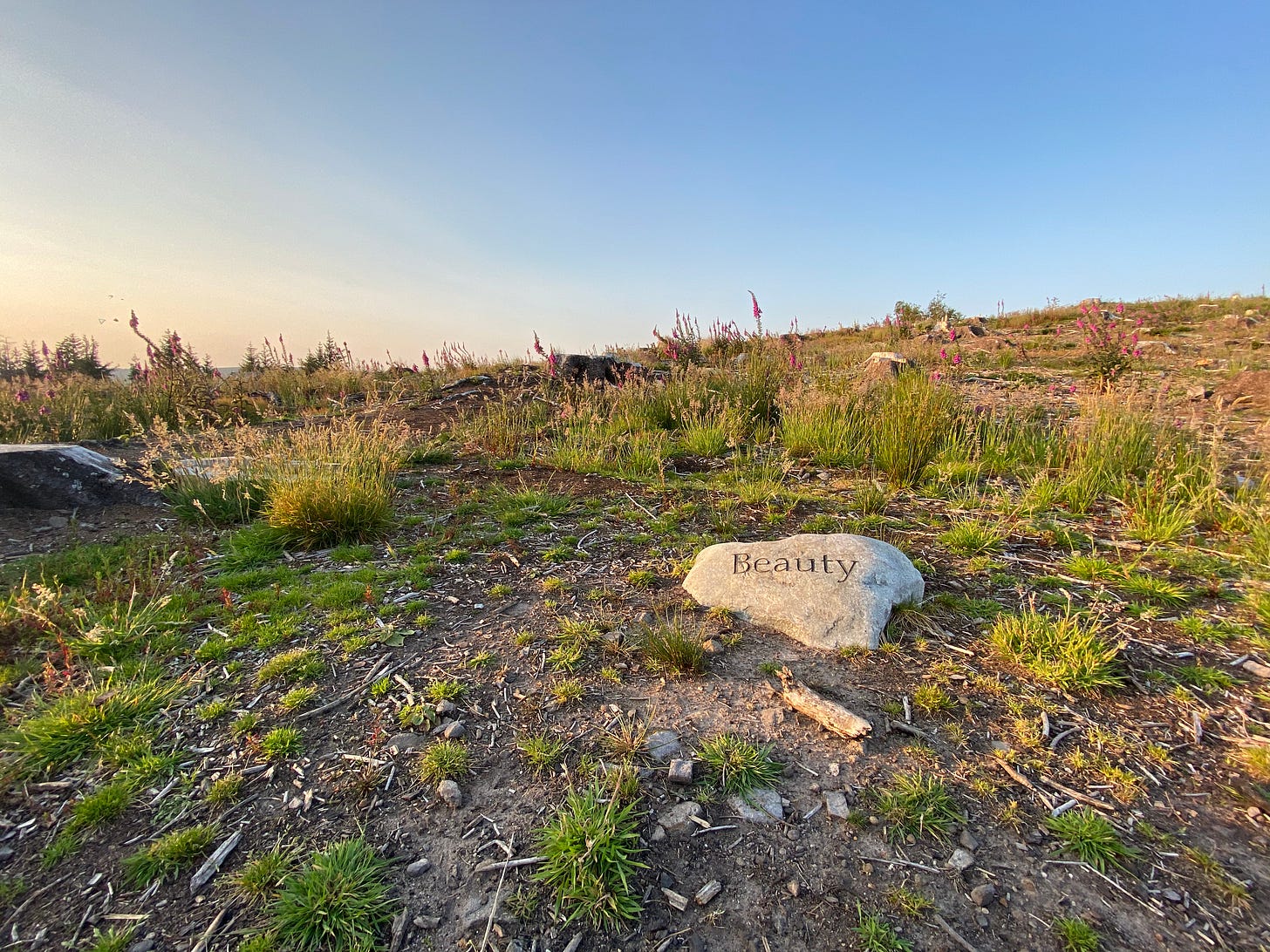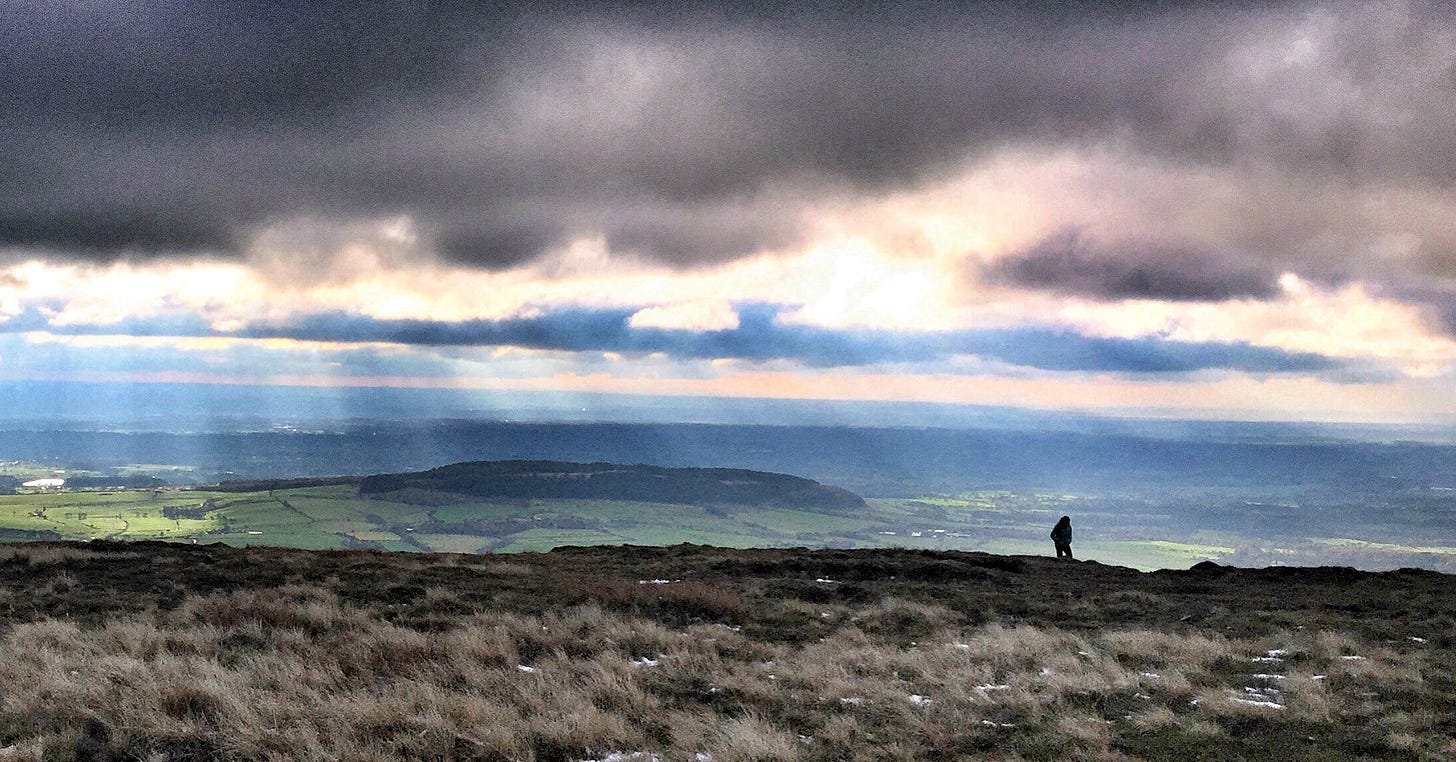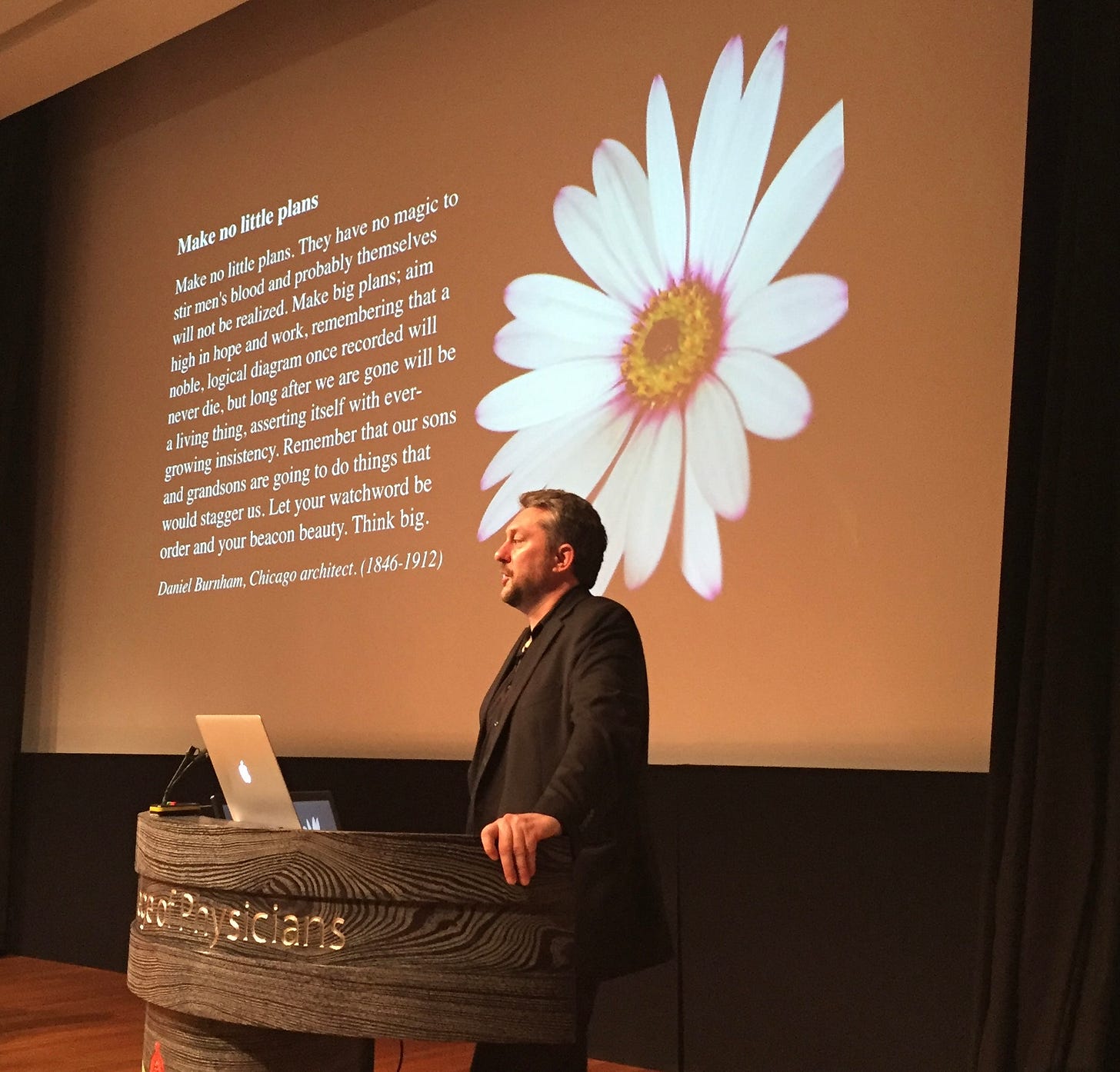Beauty. Health. Regenerative.
"bring into being buildings that are connected and in harmony with the natural environment"
"Everybody needs beauty as well as bread, places to play in and pray in, where nature may heal and give strength to body and soul."– John Muir
The recent call against ‘boring’ buildings from Thomas Heatherwick reported in the Guardian (Boring, soulless buildings are making people stressed and lonely, according to Heatherwick) and his recent book ‘Humanise’ has stirred the conversation on utility & function and delight & beauty.
This is timely and important that we hold the time and space to discuss and question the relationship of beauty in the built environment, with our health and repairing our separation from nature.
It is interesting that Heatherwicke has taken Humanise as the book title - whilst the regenerative zeitgeist is certainly shifting away from human-centric to life-centric or nature-centric.
Reading the article and being partway through Humanise, triggered a reflection, and brought together a few thoughts and notes on beauty in regenerative thinking
… if you invest in beauty, it will remain with you all the days of your life. Frank Lloyd Wright
Referring to my touchstones in such matters, in this case, John Muir, Nan Shepherd and the others we have met many times before on Regen/Notes posts, whose perspectives I find invaluable. Muir eloquently describes natural, tranquil, wild, and wondrous beauty, while in "The Living Mountain," Nan Shepherd writes of becoming, of sensing beauty through all the senses. The music of Erland Cooper and Runrig (often on play here) echoes the poignant beauty of Scottish landscapes, and the Lost Words poems and songs from Robert Macfarlane, accompanied with art from Jackie Morris, take us deeper into the beauty of our natural world.
Place Beauty (Forest of Bowland)
Back in 2014, a Geraldine Pilgrim installation celebrated the 50th anniversary of the designation of the Forest of Bowland as an Area of Natural Beauty (AONB).
Viewers followed a trail of 28 stone cobbles, each engraved with the word “beauty” in a different language. The trail led them to an engraved boulder with the word beauty and a stone bench to sit and contemplate the beauty of the surroundings reflected in a mirrored box set amongst the trees.
Built into the shelter at the summit on Fairsnape is one such stone - schonheit - and what better place could there be to sit and contemplate the Bowland natural beauty.
Fairsnape … Some have been so inspired to have named their business after this fell!
One of the Biophilia Walk prompt cards encourages reflection on where you find beauty, in the distance of landscapes, in the nearby trees and plants or in the close-up of lichen.
And of course the question: How do we reflect all this within our built environment?
Heal the Future
“It is who we are and who we become, not just what we do” is a core message within our Regenerative Playbook
As we are increasingly serious about regenerative futures, then it is no longer acceptable to only consider what good looks like, we are not passive observers, but active agents, we need to sense what good feels like.
Until we feel and sense the beauty of buildings connected to nature, in our briefings, our designs, construction, and as being part of a built environment then we should not claim to be regenerative.
We can positively emphasise the salutogenic potential of buildings to positively impact health, prioritising designs that inspire joy and beauty while discouraging those that cause discomfort, illness, and a sense of unhappiness. Extensive research shows how buildings influence our emotions and can contribute to our overall well-being. Through regenerative design, we have a wonderful opportunity based on potentials not problem solving to enhance neural and biological health alongside restoring ecological health.
It's how it feels and functions. Not how it looks Writes Stig L. Andersson in Perspectives on City Nature:
Demand interestingness
Back to that Guardian report, citing Thomas Heatherwick we should demand interestingness. Humans simply cannot thrive without psychologically sustainable environments. The article also cites Colin Ellard, a research psychologist and professor at Waterloo University in Canada referenced that there was growing evidence that showed “the profound impact that the design of buildings has on how we feel, how we treat one another, and our overall psychological wellbeing”.
The Beauty of Regenerative Patterns
Beauty was central in our October Zoom Regenerative 58 conversations, exploring regenerative patterns with Jo Petroni, with three ‘prompts’ proving the space for conversation:
What brought you into the regenerative space?
How did you feel when realising that 'everything is connected'
How do you dance with the beauty of interconnectivity? Our next ZR session will be on the 21 November - details soon.
Living Building Beauty
And of course, Beauty is at the heart of the Living Building Challenge, “to conceive, design and bring into being buildings that are connected and in harmony with the natural environment” - through the challenge’s Beauty petal
The intent of Beauty LBC Petal Imperative is to connect teams and occupants with the benefits of biophilia and incorporate meaningful biophilic design elements into the project through a biophilic framework and plan to …
include elements that nurture the innate human/nature connection.
deliberately incorporate nature through Environmental Features, Light and Space, and Natural Shapes and Forms, Natural Patterns and Processes and Evolved Human-Nature Relationships.
uniquely connect to the place, climate, and culture
meaningfully integrate public art
contain design features intended solely for human delight and the celebration of culture, spirit, and place appropriate to the project’s function.
Biophilic Society
Whether it is stargazing and storytelling, biophilia talks and training, mindful mornings and walks, exploring aspects of beauty is never far away in conversations at our Living Future Europe Biophilic Society and Biophilia Camp. Let the Light In
Let your watchword be ordered and your beacon beauty. Daniel Burnham, Chicago architect. (1846-1912)








